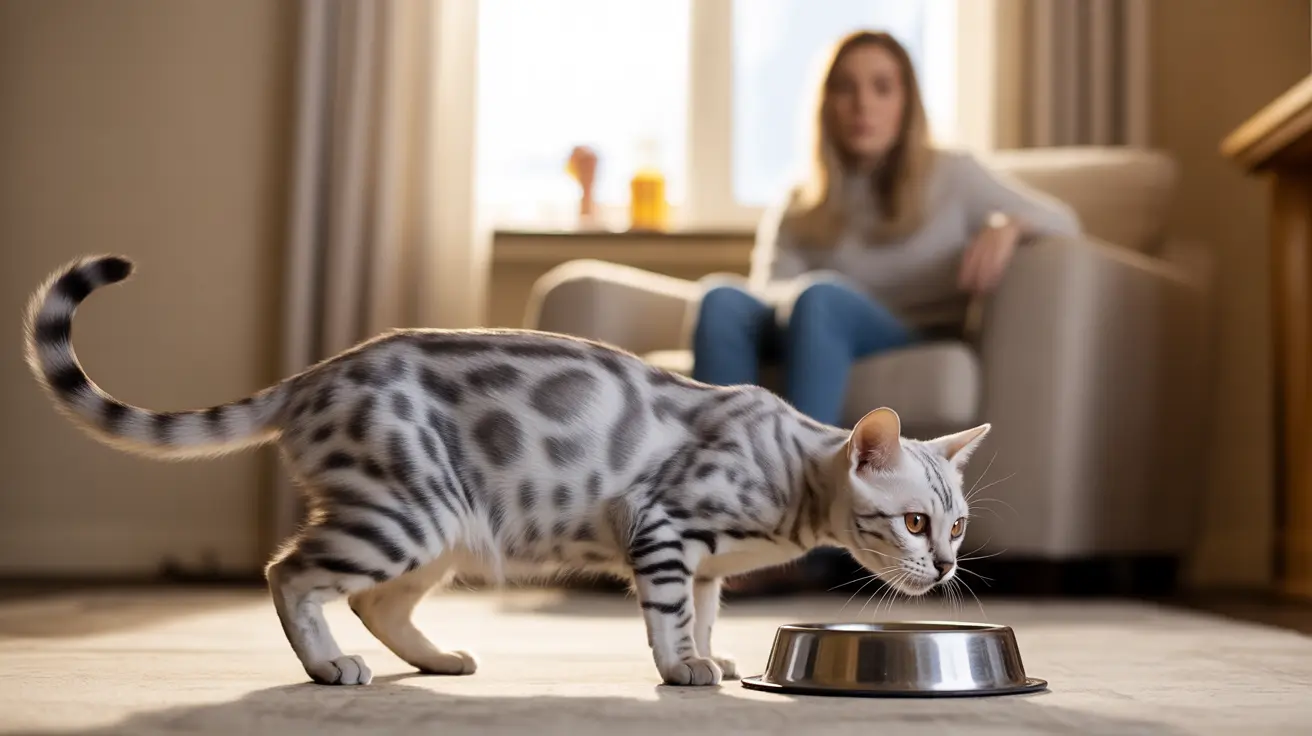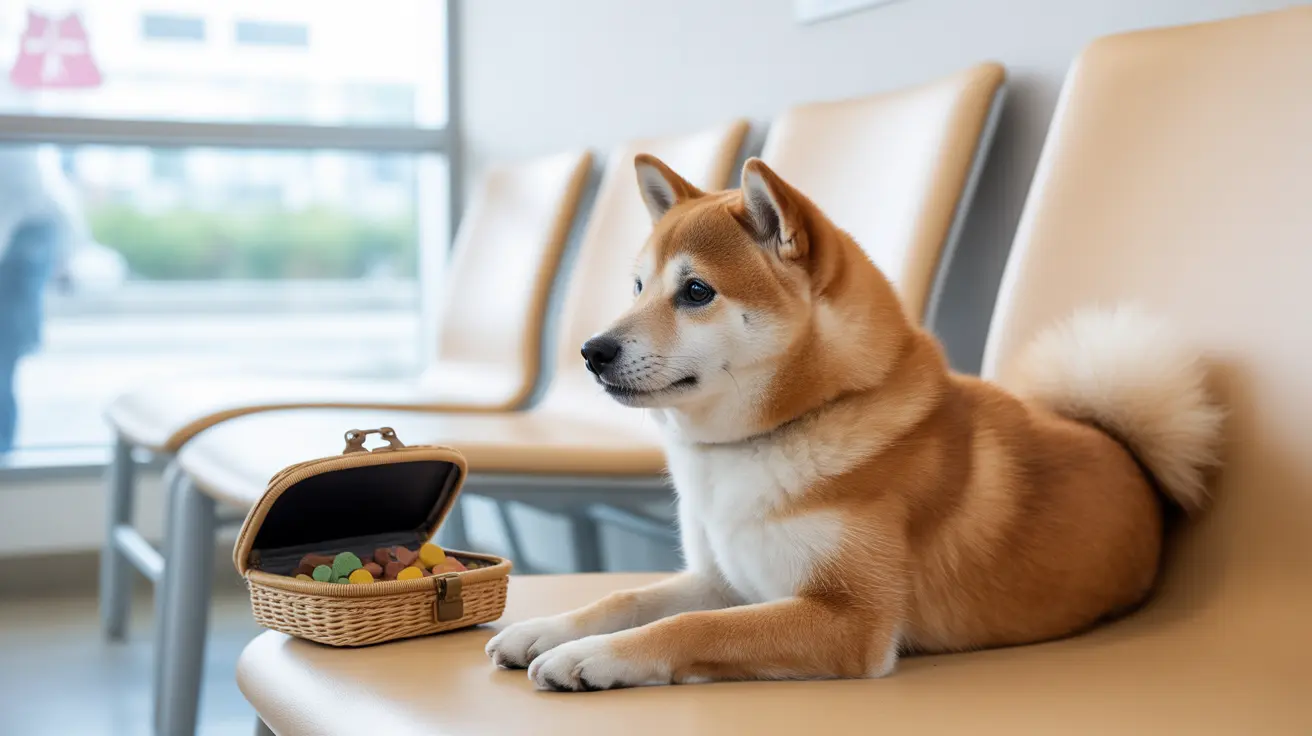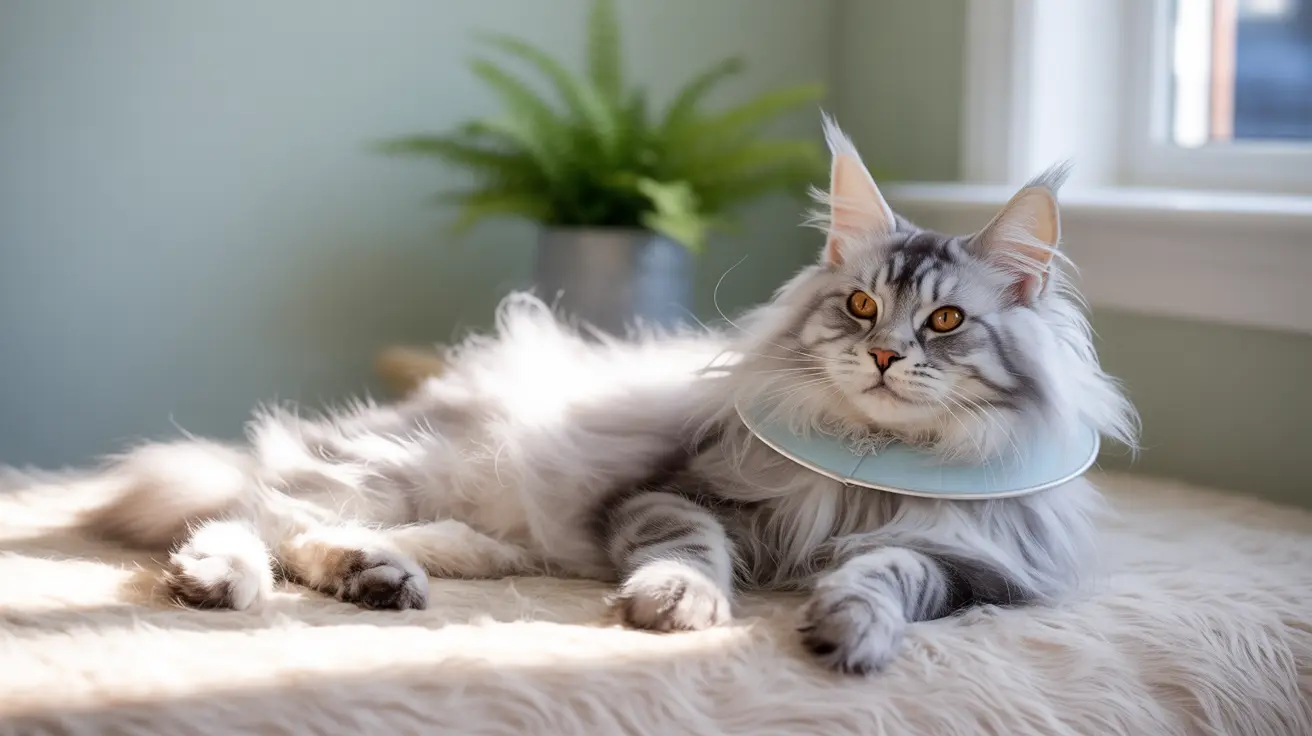Eating with Cats: Veterinarian Advice on Social Media Feeding Trends
Social media platforms are flooded with heartwarming videos of cat owners sharing meals with their feline companions, claiming these shared dining experiences strengthen the human-cat bond. While these viral moments might seem endearing, veterinary professionals have important concerns about this trending practice. Understanding the science behind feline feeding behavior and stress responses is crucial for cat owners who want to provide the best care for their pets.
The reality is that cats have complex psychological and physiological needs that differ significantly from human dining preferences. What appears to be a bonding moment on camera might actually be causing your cat unnecessary stress or creating problematic feeding dependencies. Let's explore what veterinary science tells us about this popular trend and discover healthier alternatives for building strong relationships with our feline friends.
The Veterinary Perspective on Eating with Cats
Dr. Katharina Staub and other veterinary professionals strongly advise against establishing elaborate feeding rituals that involve constant human presence during cat mealtimes. This recommendation isn't meant to discourage bonding with your cat, but rather to protect their natural feeding behaviors and psychological well-being.
The primary concern centers around dependency and stress. When cats become accustomed to eating only when their human companion is present, they may develop feeding anxiety if the routine is disrupted. This can lead to appetite loss, which is particularly dangerous for cats due to their unique metabolism and susceptibility to rapid weight loss.
For healthy cats, veterinarians recommend allowing them to eat independently without elaborate human involvement. This approach respects their natural instincts and prevents the development of problematic feeding behaviors that could impact their health in the long term.
Understanding Feline Psychology During Mealtime
Every cat has an individual personality that influences their comfort level around human activity during feeding time. Some cats find human presence comforting and may naturally choose to eat when their owners are nearby. Others, however, experience stress when humans are too close during their meals.
Cats are naturally solitary hunters and eaters in the wild. Their feeding instincts are deeply rooted in survival behaviors that prioritize safety and minimal distraction. When humans create elaborate feeding rituals or insist on eating simultaneously with their cats, they may be inadvertently triggering stress responses.
The stress response can manifest in various ways, from subtle behavioral changes to more obvious signs of discomfort. Understanding these individual differences is crucial for cat owners who want to provide the most comfortable environment for their pets.
Recognizing Signs of Mealtime Stress in Cats
Cat owners need to be observant of their pet's behavior during feeding time to identify potential stress indicators. Stressed cats may exhibit reluctance to approach their food bowl when humans are present, eating quickly and then retreating, or showing signs of anxiety such as excessive meowing or restlessness.
Other warning signs include changes in eating patterns, decreased appetite, or waiting until the owner leaves before eating. Some cats may also show physical signs of stress such as dilated pupils, flattened ears, or a lowered body posture while trying to eat.
If you notice any of these behaviors, it's important to reassess your feeding routine and consider giving your cat more space during mealtime. The goal is to create a calm, predictable environment that allows your cat to eat comfortably according to their natural instincts.
Special Considerations for Sick or Appetite-Challenged Cats
While healthy cats generally benefit from independent feeding, cats with health issues or poor appetite require different approaches. For these cats, veterinarians may actually recommend stimulating feeding through human interaction and food variety.
Therapeutic feeding routines for sick cats often involve warming foods to enhance their aroma and appeal, offering a variety of textures and flavors, and sometimes providing gentle encouragement during mealtime. This approach helps prevent the rapid weight loss that can be particularly dangerous for cats due to their unique metabolism.
Cats cannot safely fast for extended periods like some other animals. Their physiology requires regular food intake to prevent serious health complications, including hepatic lipidosis, a potentially fatal condition where fat accumulates in the liver. For cats with compromised health, supervised feeding may be medically necessary.
The Impact of Social Media Trends on Cat Care
Social media has significantly influenced pet care practices, often promoting trends that may not align with veterinary recommendations. The popularity of eating-with-cats videos demonstrates how viral content can shape pet owner behavior, sometimes without consideration of the underlying animal welfare implications.
While these videos are often well-intentioned and showcase loving relationships between pets and owners, they can inadvertently promote practices that may not be suitable for all cats. The problem arises when viewers attempt to replicate these scenarios without understanding their cat's individual needs or the potential consequences.
It's important for cat owners to balance social media inspiration with evidence-based veterinary advice, always prioritizing their pet's health and well-being over trending content creation.
Better Ways to Bond with Your Cat
Veterinary professionals emphasize that stronger bonds with cats are better built through play and petting rather than shared meals. Interactive play sessions that engage your cat's hunting instincts provide both physical exercise and mental stimulation while strengthening your relationship.
Regular grooming sessions, if your cat enjoys them, can be deeply bonding experiences. Many cats appreciate gentle brushing, which mimics social grooming behaviors they would experience with other cats. This activity also helps maintain their coat health and allows you to check for any physical changes.
Creating enriching environments with climbing structures, puzzle feeders, and rotating toy selections keeps cats mentally engaged and demonstrates care for their well-being. These activities respect cats' natural behaviors while fostering positive associations with human interaction.
Proper Feeding Guidelines for Cat Owners
Establishing healthy feeding routines involves providing cats with nutritionally complete diets formulated specifically for their needs as obligate carnivores. Cats require diets that are primarily meat-based, with specific nutrients that aren't found in plant sources.
Feeding schedules should be consistent and predictable, typically involving two to three meals per day for adult cats. The feeding area should be quiet, easily accessible, and separate from litter boxes to maintain hygiene and comfort.
While occasional safe human foods can be offered as treats, they should never comprise more than a small portion of your cat's daily intake. Safe options include small amounts of cooked lean meats without seasoning, certain cooked vegetables, and specific fruits, but always in moderation and after consulting with your veterinarian.
Frequently Asked Questions
Q: Is it harmful to eat at the same time as my cat?
While not directly harmful, eating simultaneously with your cat can create dependency issues and stress if the routine is disrupted. Veterinarians recommend allowing cats to eat independently to maintain their natural feeding behaviors and prevent potential appetite problems.
Q: How can I tell if my cat is stressed during mealtime?
Signs of mealtime stress include reluctance to approach the food bowl when you're present, eating quickly and retreating, changes in eating patterns, decreased appetite, or waiting until you leave to eat. Physical signs may include dilated pupils, flattened ears, or lowered body posture.
Q: Are there any cats that should eat with human supervision?
Yes, cats with health issues or poor appetite may benefit from supervised feeding with stimulating techniques like warming food and offering variety. However, this should be done under veterinary guidance and for therapeutic purposes rather than as a bonding activity.
Q: What are better ways to bond with my cat than sharing meals?
Interactive play sessions, gentle petting, grooming (if enjoyed by the cat), and providing enriching environments with climbing structures and puzzle feeders are more effective bonding activities that respect cats' natural behaviors and needs.
Q: Can I give my cat small amounts of my food as treats?
Some human foods are safe for cats in small amounts, including cooked lean meats without seasoning, certain cooked vegetables, and specific fruits. However, these should never exceed a small portion of daily intake, and many human foods are toxic to cats, so always consult your veterinarian first.
Q: Why do some cats seem to enjoy eating when their owners are around?
Individual personality plays a significant role in feeding preferences. Some cats do find human presence comforting during meals, while others prefer privacy. The key is observing your cat's natural preferences rather than creating artificial dependencies.
Q: What should I do if my cat has become dependent on eating with me?
Gradually transition to independent feeding by slowly reducing your presence during mealtime. Start by staying farther away from the food bowl, then gradually leave the room for short periods until your cat becomes comfortable eating alone.
Conclusion
While social media trends showing cats and humans eating together may seem charming, veterinary advice clearly indicates that independent feeding is typically best for feline health and behavior. The key to responsible cat ownership lies in understanding your pet's individual needs and natural instincts rather than following viral trends that may not serve their best interests.
Building strong bonds with cats is definitely important, but it's most effectively achieved through activities that respect their natural behaviors—interactive play, appropriate petting, and environmental enrichment. By prioritizing your cat's psychological and physical well-being over social media appeal, you'll create a healthier, happier relationship that benefits both you and your feline companion for years to come.






